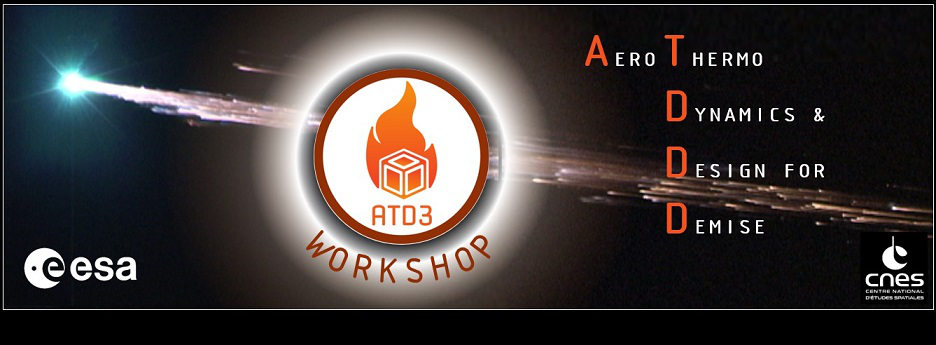Speaker
Description
Among various techniques for Design for demise, maximizing the available heat to demisability is one of the complex problems which may require change in shape to increase the local heat flux, change in size to increase peak heat flux or adding additional energy by exothermic reactions. A frontal cavity has been studied in different applications and has been found to manipulate the heat transfers characteristics during hypersonic flights. A hemispherical shape can be considered one of the optimum shapes for demisability with high local heat flux on the edges and as demise progress from edges to center, it can further increase peak heat flux by decreasing ballistic coefficient. It also can provide the holding of exothermic heat addition if integrated with the system. However, frontal cavity in high-speed flows (like parachute or inflatable hypersonic / supersonic decelerator) can also have intermittent, non-stationary large amplitude, low frequency bow shock pulsations in front of it. During the absence of large amplitude fluctuations, small amplitude high frequency fluctuations are also observed in front of hemispherical cavity. Here large amplitude fluctuations can lead to reduced aerodynamic heating by emitting large vortices from the sides, while absence of these large amplitude fluctuations in frontal cavity can be favourable for demisability. In this experimental study, the effect of angle of attack have been studied on bow shock formation and its large and small amplitude instabilities in front of hemispherical cavity at hypersonic Mach number 7. The experiments for force measurements and Schlieren flow visualization with high-speed camera at 50000 frames per second, are carried out for different angle of attacks at Kashiwa Hypersonic & High-Enthalpy Wind Tunnel, The University of Tokyo. It is found that the bow shock formed in front of hemispherical cavity is subjected to nonlinear intermittent self-sustained fluctuations, which are quantified in time-domain using the image processing methods. The different bow-shock instability patterns are analyzed. Further it is found that these large amplitude fluctuations can be completely controlled by moderately changing the angle of attack of the cavity. The critical angle of attack after which these large amplitude fluctuations are completely controlled, are quantified in this study. This study only considers the aerodynamic effects in front of hemispherical cavity. In future it will be extended to aerodynamic heating analysis with and without direct hydrogen injection at the center of cavity.

